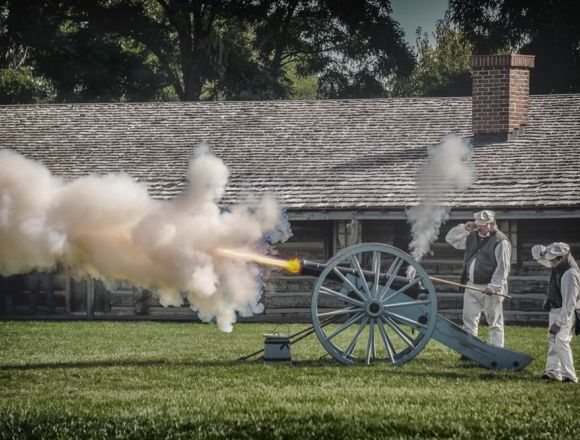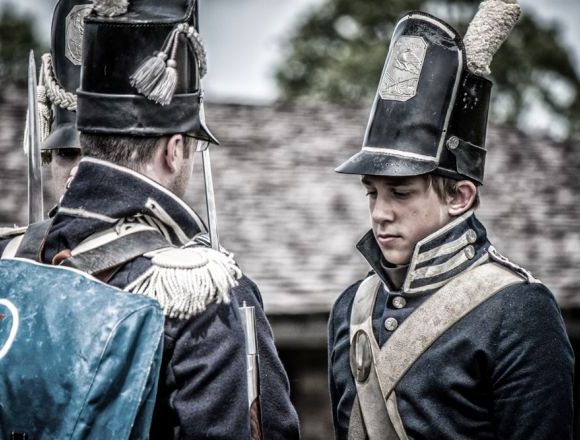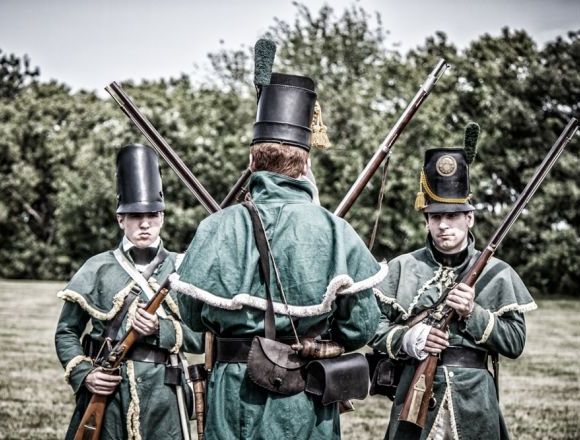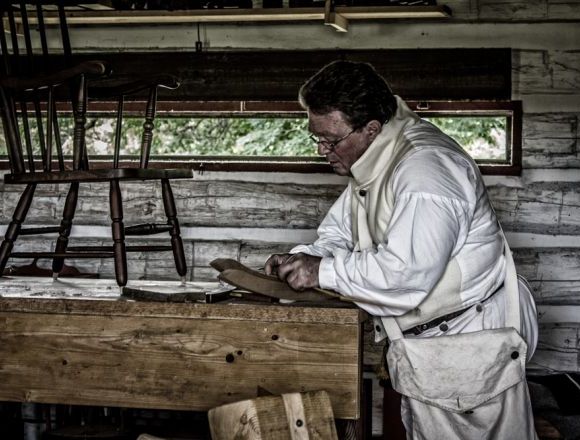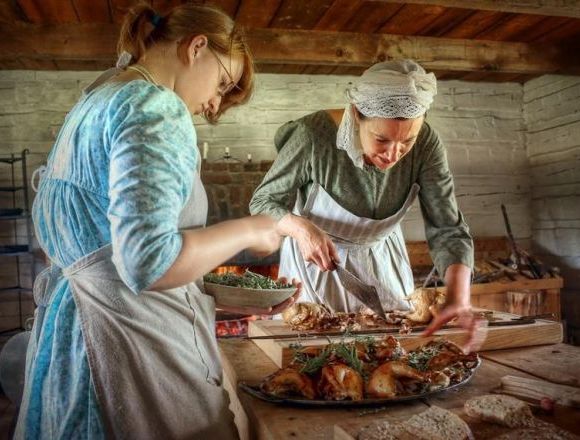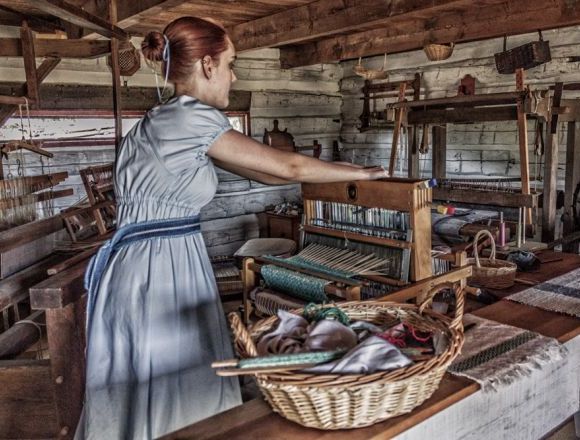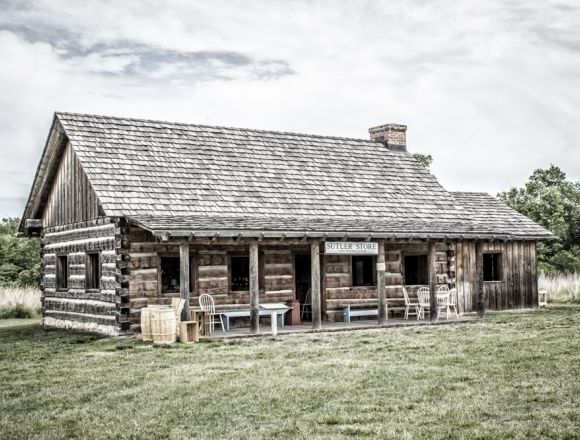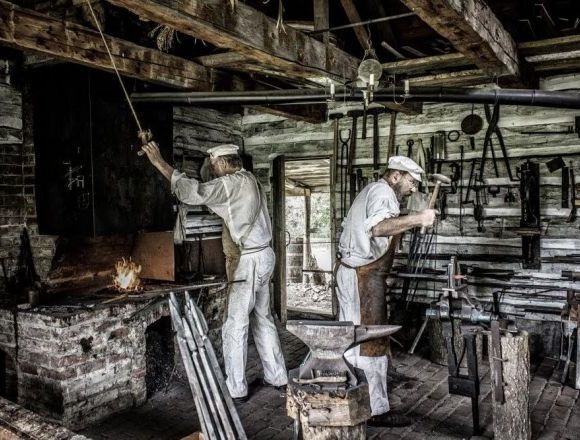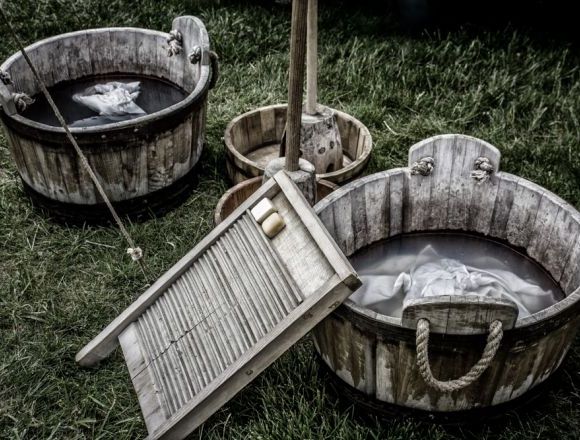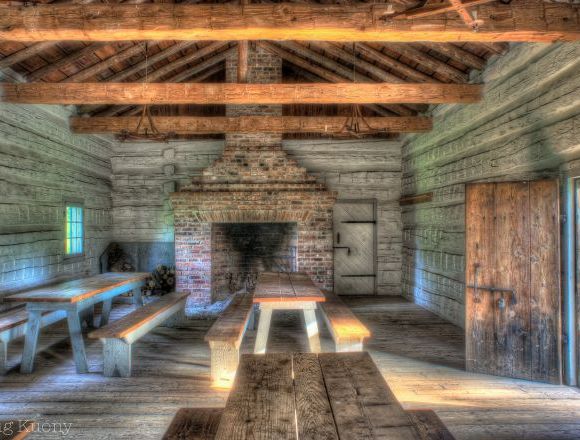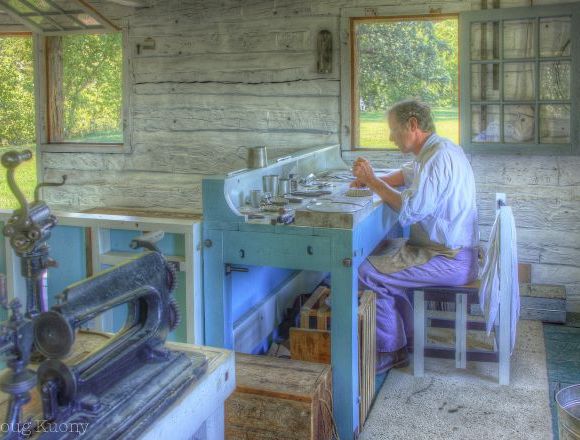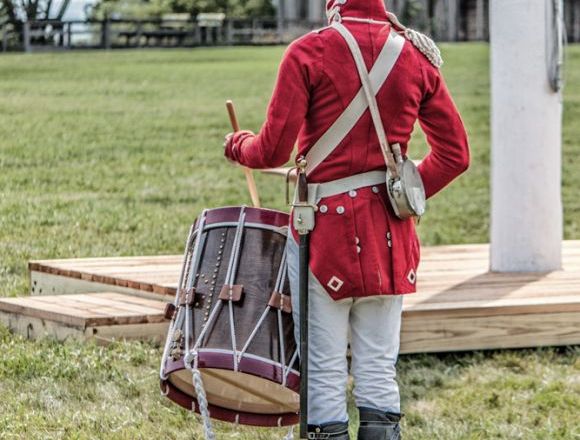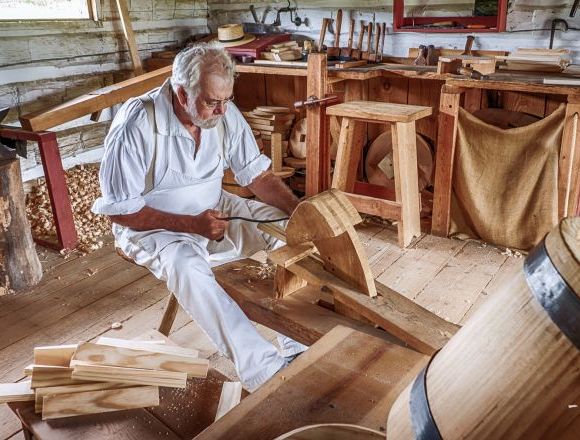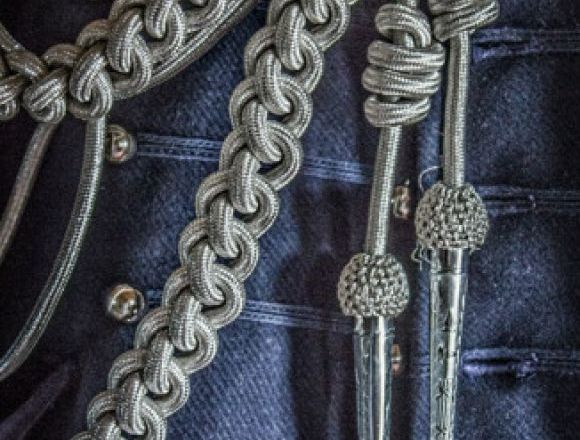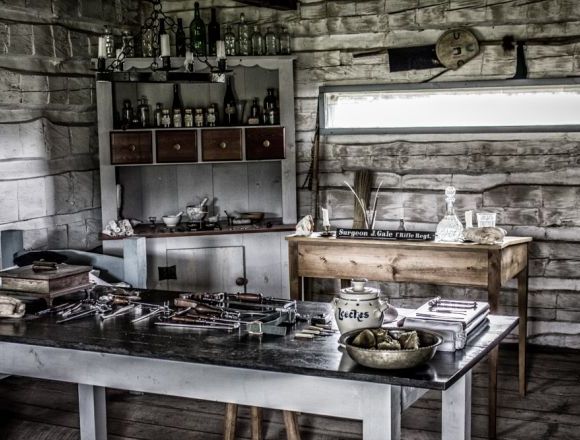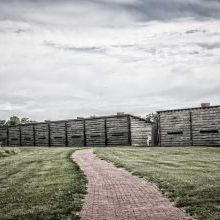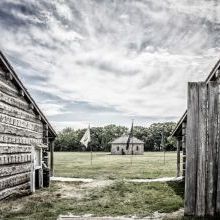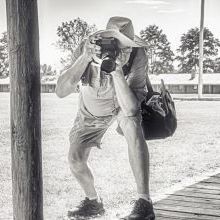The Friends of Fort Atkinson is a volunteer based group dedicated to the preservation of Fort Atkinson and it's history.
The Fort Atkinson Foundation is a 501 C3 organization dedicated to the support of Fort Atkinson, it's rich history and the volunteers.
Who You Might See
Artillery
Company G of the 6th US Infantry may be the smallest company on post, but they're sure to be the least forgettable. You can see (and hear) them several times a day firing any number of our period reproduction artillery pieces. These guns were used for signaling, celebration, and warfare. The fort was originally armed with artillery pieces that could fire parallel to the fort walls.
1st Rifle Regiment
The Riflemen functioned as the special forces of the time period Fort Atkinson was in active military service. They can be identified by their yellow-fringed green frocks and flintlock rifles. They often are armed with a menacing belt axe and knife. During the time of the fort, the Rifle Regiment was disbanded. Many of those stationed at Fort Atkinson were amalgamated into the 6th Infantry.
Sutler
The cultural center of the original post, the Sutler offered hundreds of items for sale to the soldiers and civilians living here. It still serves both functions today. Stop in and peruse the many items for sale, many made by Fort Atkinson or local artisans; enjoy a song or two on the period music box; have a glass of lemonade or peruse the selection candy and beef jerky.
Teacher and Pupils
Fort Atkinson housed the first school in Nebraska. Many of the married officers had children, as did many of the civilian families living just outside the walls. Come and see what they were learning in the 1820's by visiting the schoolroom on the northeast wall. Be sure to listen for the school bell, and don't be tardy!
Blacksmith
The blacksmiths (and their variants, including ferriers and armorers) were responsible for nearly everything made of steel or iron at the frontier fort. Employing roughly 25 smiths at its height, the fort produced nails, horseshoes, wagon wheel bandings, door latches, hinges, farming implements, and much more. They were also responsible for repairing the weaponry housed here. Today the blacksmiths carry on this tradition and have fabricated and maintained all of the hardware used in the construction of the fort. They also make reproduction pieces that can be purchased in the Sutler's Store.
Laundress
The laundresses served an incredibly important role at this frontier post. Keeping a force of nearly 1,000 men clean was no easy task, considering the amount of physical work the men did in and around the post and the primitive tools and soaps the laundresses had at their disposal. Laundresses were paid directly out of soldiers' wages. Come see them work just outside the north gate.
Indian Agent
Because the fort was situated deep in the frontier territory and among native tribes, the Indian Agent played an important role in maintaining communication and balancing the tensions of a growing nation. Visit the Council House located beyond the north gate to catch a glimpse of the "grand hall on the plains." Be sure to inspect the elaborate candle chandelier system.
Tinsmith
Like the blacksmiths, the tinsmith was a crucial artisan in the early America military, particularly on this remote outpost. The tinsmith produced cups, lanterns, basins, canteens, and countless other items used in the everyday lives of those stationed here. After visiting the tinsmith's well-kempt workshop, be sure to peruse his wares for sale in the Sutler's Store.
Musician
The musicians served as the command and control mechanism of the early American military. Moving thousands of troops via voice commands over the thunderous roar of muskets, rifles, and cannons would be impossible. Instead, every maneuver, task, and event in a soldier's life had a musical counterpart. The musicians would translate officers' commands into musical form that could be heard over great distances. The military employed fifes and drums (Infantry) as well as whistles and bugles (Rifle Regiment). You can easily spot the Infantry musicians by their red coatees.
Commanding Officer
The fort's first commanding officer was its namesake, Colonel Henry Atkinson. The nerve center of the garrison was the Orderly Room, and that remains true today. Here you'll find the commanding officer at his desk surrounded by lower-ranking officers and his adjutant (assistant). You may also spy him on the parade ground, inspecting troops' quarters, or entertaining dignitaries.

